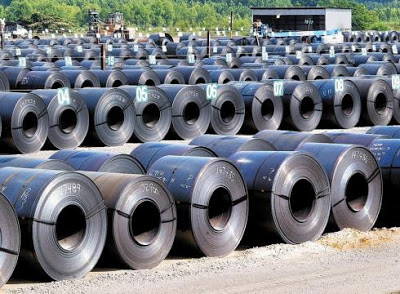by Blackrock Fundamental Equities
Infrastructure investing, once considered a niche play, is now at the center of the global economy. Artificial intelligence (AI), and the need for data centers and energy to support it, is one reason. Public infrastructure investor Balfe Morrison shares his expertise ― and excitement ― around the vast investment potential in this budding space.
Infrastructure, once seen as an investment option reserved for institutional and private markets investors, is becoming a central theme in public portfolios. The broadening seems fitting, as infrastructure itself is central to everyday life ― from the utilities providing fuel to heat our homes, to the towers transmitting data for our mobile devices and the data centers powering the proliferation of AI.
Balfe Morrison, head of listed infrastructure strategies within BlackRock Fundamental Equities, recently joined The Bid podcast to explore the growing reach and relevance of infrastructure investments. The conversation was broad, but one area of particular interest: the intersection of infrastructure and AI.
Investments backed by ‘basics’
Investing in infrastructure means investing in the companies and assets that Mr. Morrison says provide “the most critical, base services for our quality of life.”
Among them: utilities providing electricity, water and gas for heating; oil and gas pipelines transporting fuel for our cars; airports, toll roads and railroads that are the gateways to business and leisure travel; tower companies that transmit our mobile data; and the data centers generating AI.
While providing “the most important services in the world,” Mr. Morrison believes he is able to invest in these assets at “really fair prices” and achieve equity-like returns in the process with lower volatility than broad global stocks.
And as basic as these services are, the current moment is anything but that. In fact, Mr. Morrison sees an incredible, “generational” opportunity for investing in infrastructure today.
AI as an accelerator
One factor making this such an exciting time: AI. “Outside of the shale, oil and gas boom in the early 2010s, this is the best growth environment we’ve seen for infrastructure,” Mr. Morrison says.
He cites energy and electricity demand in the U.S. that is experiencing growth for the first time in almost two decades, with much of it driven by the energy needs of AI. Data center electricity demand is growing at about 20% annually through the end of the decade, from roughly 4% of current U.S. electricity demand to 10%-12% by 2030, based on data from McKinsey and calculations by BlackRock.
The big players in the AI space, the “hyperscalers,” are spending hundreds of billions of dollars to advance it. A big part of that spending is directed to the development of data centers that consume massive amounts of electricity and energy to effectively generate AI. Utilities are prime beneficiaries.
If you’re bullish on AI and AI adoption, Mr. Morrison says, then you have to be bullish on power and utilities. It’s a chorus echoed by AI developers and operators. He notes a 2025 survey from Schneider Electric in which U.S. data center developers cited power procurement and accessing the grid as the largest bottlenecks to data center development, ahead of accessing chips and land.
And for those who may not be as bullish on AI, Mr. Morrison has little worry for the infrastructure play. Even if the AI adoption rate isn’t as fast as projected or the hyperscalers slow or stop investing, “the utilities and the pipeline companies have contracts with the hyperscalers. So there is not going to be any earnings cliff or big earnings hit if the AI story is not what we all think it is,” he says, adding that infrastructure investors are better protected from this risk than the picks and shovels of the AI value chain or other areas leveraged to the AI buildout.
Public versus private infrastructure
Mr. Morrison is primarily focused on public infrastructure, which he describes as similar to private in many ways. Whether public or privately owned, the asset ― a gas pipeline, a data center, a solar farm, a railroad ― makes its money the same way and is regulated the same way. The return profile of the two, Mr. Morrison observes, is highly correlated over long periods of time. In addition, “these companies and these assets tend to generate more of their total return from dividends and income, as a percentage of the total return, versus the broader market.”
The differences? Slightly more liquidity in public infrastructure funds, as well as a sector composition that favors the regulated utility space among listed infrastructure and data centers on the private side.
“We don’t think one is better or worse than the other. For investors able to gain access to either, or both, we think of them as complements in a portfolio.”
Opportunity well beyond AI
The infrastructure opportunities don’t stop at AI. Mr. Morrison points to growth in natural gas pipelines and potential reinvigoration in the U.S. railroad sector, where a proposed transaction that would form the first transcontinental rail system could potentially incite further M&A in the sector. Outside the U.S., he sees a resolute focus on building out renewable infrastructure boosting growth in European utilities.
In short, Mr. Morrison believes “it is a really exciting time to be in the sector. We still think earnings growth is going to accelerate, it's still going to be defensive and you're still going to get that above-average yield. We think it's a great time to invest.”
Copyright © Blackrock Fundamental Equities















